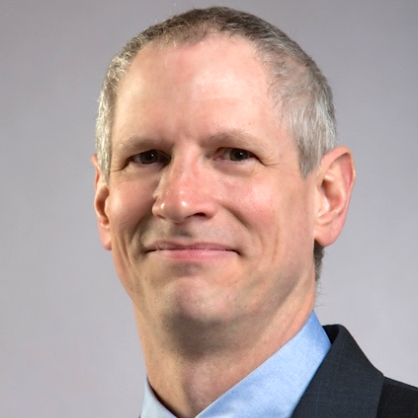College Launches Machine Learning Concentration
 By Patrick L. Kennedy
By Patrick L. Kennedy
Not long ago, speech processing software was pretty much limited to a phone robot asking a caller to speak the number “1,” says Professor and ECE Department Chair W. Clem Karl. “Now we routinely ask Alexa questions or tell Google Maps where we want to go just by speaking.” That’s the result of an explosion in machine learning, says Karl, and “we are just starting to mine its capabilities.”
To prepare students to design data-driven learning and decision-making algorithms across a rapidly growing range of fields, the College of Engineering is offering a concentration in machine learning. Available to all ENG undergraduates, the concentration will equip students with the theory, algorithms, software and hardware skills and tools they’ll need to create and optimize machine learning algorithms and to curate, visualize, and analyze data in a variety of industries.

“In my conversations with industry leaders of all sectors who hire engineers, they identify machine learning as perhaps the most desirable and ubiquitous skill they need in their incoming workforce, especially the intersection of machine learning with technological systems,” said College of Engineering Dean Kenneth Lutchen. “With this new concentration, our graduates will have an instant advantage as they enter the workforce.”
Like other ENG concentrations, machine learning will be noted on students’ official transcripts. But it is not a minor, which consists of at least 20 credits. The concentration is a sequence of three courses, for a total of 12 credits, plus an experiential component. Students across all departments can take these courses from their electives without needing additional courses to graduate. This should allow as many students as possible to gain exposure to machine learning concepts.
And that accessibility is intentional, say the faculty involved. Producing a greater cohort of AI-savvy ENG graduates anticipates the enormous market for data scientists in the coming years. According to Bureau of Labor Statistics (BLS) projections, the demand for computer and information research scientists will grow by 15 percent by the end of this decade. The BLS says that rate is “much faster than the average for all occupations. Job prospects are expected to be excellent.”

“As engineers, we take a complex physical world and abstract it away,” says Karl. “In other words, we model it, and use those models as the basis to create things. That to me is what engineering is. Before the age of computers, modeling was limited to what you could do with the human head and a pad of paper.”
Now, with greater computing power and the collection of colossal amounts of data, says Karl, “We’re able to bring a new kind of tool into the engineering toolbox, to do more complex models in those applications where the analytic models aren’t well understood or are not simple. These data-driven methods are a huge boon.”
Graduates capable of integrating data science methods like machine learning with high impact products will be in demand in all manner of fields. “There’s a vast set of applications,” says Professor Prakash Ishwar (ECE, SE). Ishwar’s efforts coordinating the creation of the machine learning concentration earned him an ENG Faculty Service Award, announced during Commencement proceedings.

For example, “Medical analytics is a huge domain where machine learning is beginning to play an important role,” says Ishwar. “You have tons of data from advances in wearables about people with different medical conditions—demographic information, age, preexisting conditions, vital signs, symptoms—and then the question is: Can we diagnose a disease or predict with some confidence whether a patient is likely to improve with a certain treatment? Can we guide in real-time optimal therapies or dosing based on these data? With machine learning, you can train algorithms to discover patterns which could predict success of treatments.” (Indeed, Professor Yannis Paschalidis (ECE, BME, SE) discussed this very topic in his recent Charles DeLisi Distinguished Lecture.)
Careers can also be made of machine learning in audio and visual analysis, imaging, speech recognition, natural language processing, recommendation systems, autonomous vehicles, animation and gaming, and city functioning, among others. “Basically any application that has a lot of data with complex relationships between many variables,” says Ishwar. “If you think that is something that will play an important role in your career trajectory, you should consider this concentration.”

“Machine learning is so cross-cutting, all engineers can benefit from learning it,” says Professor and Senior Associate Dean for Academic Programs Solomon Eisenberg (BME, ECE). The concentration, then, fits with ENG’s approach to undergraduate education. “We don’t have a lot of small silos. Today’s problems require much fewer silos and much more cross-disciplinary exposure and integration.”
The concentration consists of one required course—either Introduction to Machine Learning or Learning from Data—followed by two courses drawn from three pillars: Models, Learning, and Inference; Optimization, Algorithms, and Programming; or Applications. “We structured the concentration this way so that you get an overview in the required course, and then can dig deeper in the pillar courses,” says Ishwar.
Models, Learning, and Inference allows students to “get into the nuts and bolts of the mathematics of how the algorithms work,” Ishwar says. Optimization, Algorithms, and Programming delves into software and hardware methods to make training and decision-making efficient—to make learning algorithms run faster on large data sets with less power, memory, or data transfer. The Applications pillar covers a variety of industry applications such as image/video processing and computational vision, robotics, software radios, and computational and systems biology.
“Artificial intelligence, machine learning—these are going to be core competencies for all engineers who want to be impactful moving forward,” says Karl. “It’s just the common language we’re going to need if we want to move beyond last-generation solutions to problems.”
Students are urged to declare the concentration as early as possible but no later than May 1 of junior year. Visit the Machine Learning page for more details.